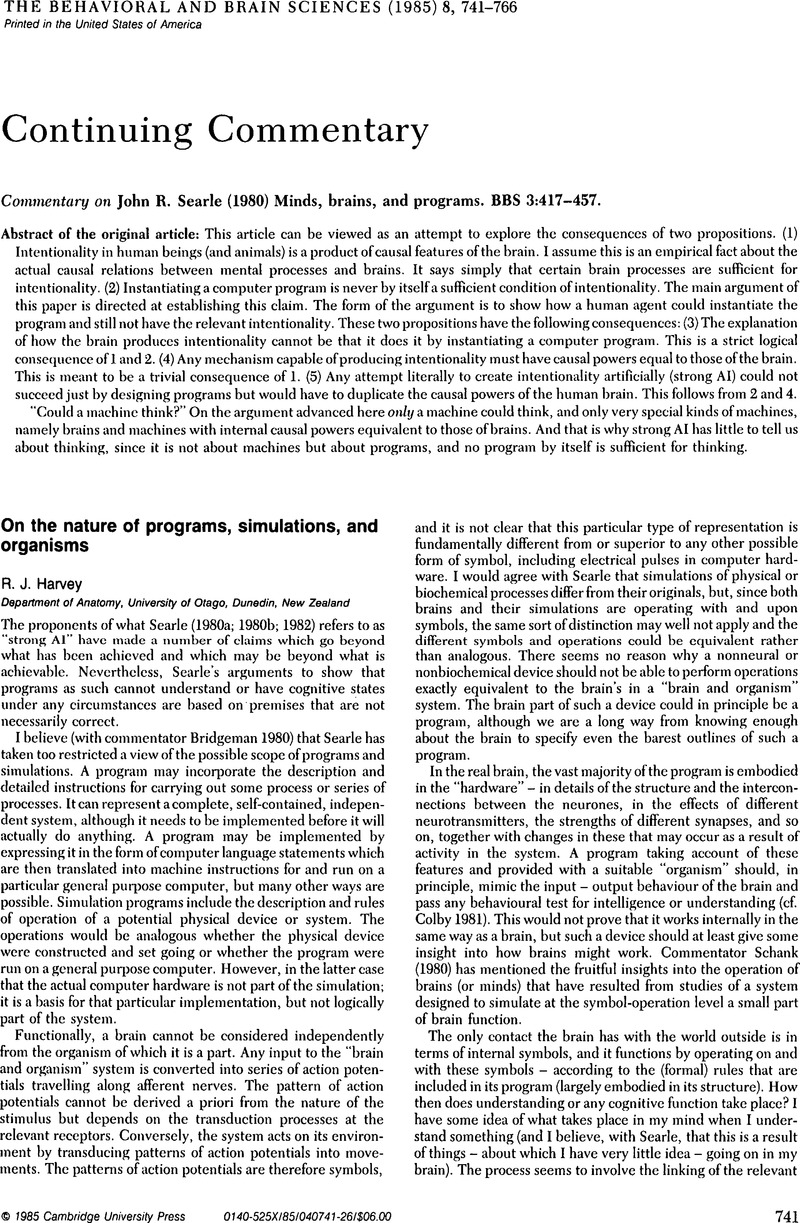Crossref Citations
This article has been cited by the following publications. This list is generated based on data provided by Crossref.
HARNAD, STEVAN
1989.
Minds, machines and Searle.
Journal of Experimental & Theoretical Artificial Intelligence,
Vol. 1,
Issue. 1,
p.
5.
DYER, MICHAEL G.
1990.
Intentionality and computationalism: minds, machines, Searle and Harnad.
Journal of Experimental & Theoretical Artificial Intelligence,
Vol. 2,
Issue. 4,
p.
303.
MacQueen, Kenneth G.
1990.
Not a trivial consequence.
Behavioral and Brain Sciences,
Vol. 13,
Issue. 1,
p.
163.
Searle, John R.
1990.
The causal powers of the brain: The necessity of sufficiency.
Behavioral and Brain Sciences,
Vol. 13,
Issue. 1,
p.
164.
Harnad, Stevan
1991.
Other bodies, other minds: A machine incarnation of an old philosophical problem.
Minds and Machines,
Vol. 1,
Issue. 1,
p.
43.
Dyer, Michael G.
1994.
Thinking Computers and Virtual Persons.
p.
173.
Harvey, R.J.
1995.
Can computers think? Differences and similarities between computers and brains.
Progress in Neurobiology,
Vol. 45,
Issue. 2,
p.
99.





